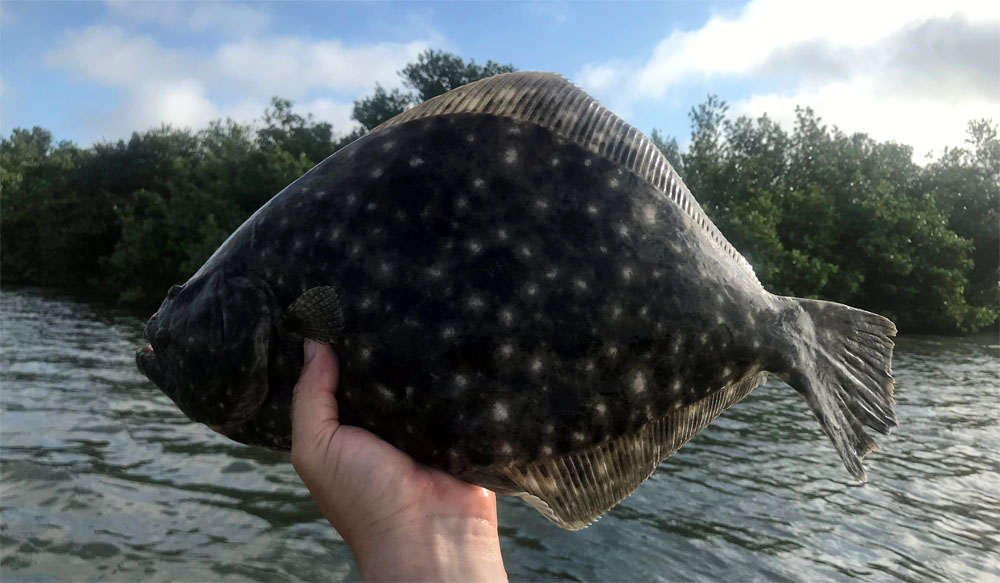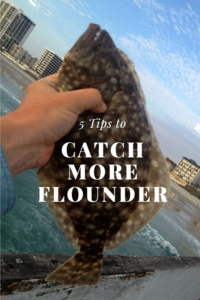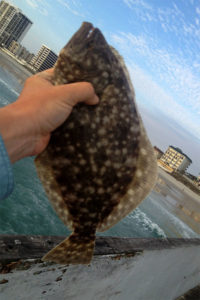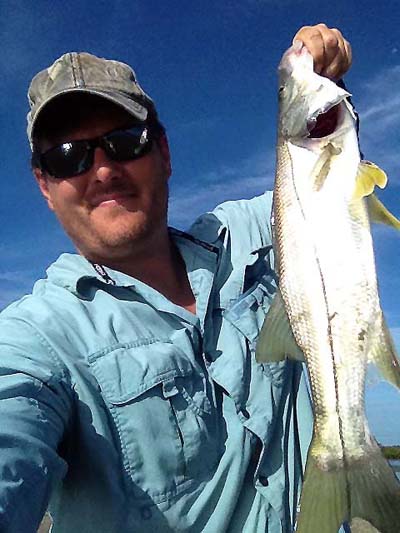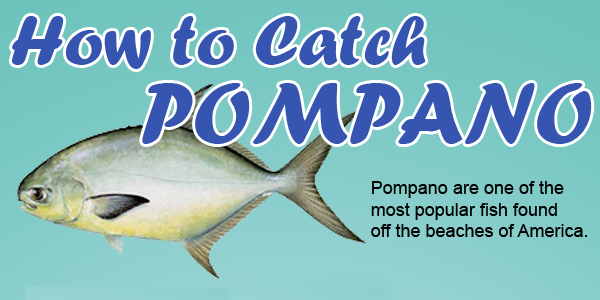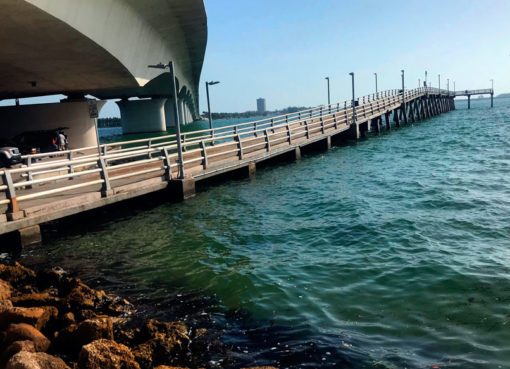In Florida there are two types of Flounder that shore-bound anglers are most likely to catch, the Southern Flounder and the Gulf Flounder. Both species have a minimum size of 12” and a bag limit of 15 fish per day per angler. No matter the species you are targeting, here are 5 tips that will help you catch more fish!
1. Fish in Flounder’s Preferred Habitat
2. Use Water Flow to Your Advantage
3. Fish Low and Slow
4. Hesitate Before Hook Set
5. Live Bait Works Well, But so do Lures
1. Fish in Flounder’s Preferred Habitat
Flounder and an ambush predator that spends the vast majority of its life on the bottom. They have a sensitive belly (which is actually one of their sides) and as such Flounder spend most of their time on a muddy or sandy bottom.
Another feature that Flounder are fond of is current. Because they are ambush predators they prefer to set up in an area that has current bringing their prey to them. While Flounder do prefer areas that have current, they are not the most athletic swimmers so they are not very active in excessively strong current.
Find an area that has a sandy or muddy bottom with a light to moderate current that has baitfish in the area, and you are likely to find flounder.
PRO TIP: If you spot a large school of bait in an area suspected to hold flounder, there is a good chance that there will be flounder beneath that school
2. Use Water Flow to Your Advantage
Since we now know that Flounder prefer a bit of current it is now time to use that current to your advantage. Most fish that are ambush predators, which Flounder are part of that group, will face into the current and allow the current to bring their meal to them, or watch for prey that is struggling to fight the current.
Set up down current from an area suspected to hold flounder. Cast far beyond the strike zone and work the bait slowly back to you. Doing so will cause the Flounder to think the bait is strugling to fight the current and entice a strike.
3. Fish Low and Slow
Flounder spend most of their lives hanging out on the bottom waiting for food to pass by them. They are also not very strong swimmers (compared to the faster fish like Mackerel) so they tend not to chase fast moving prey.
When fishing for Flounder it is best to keep the bait on or as close to the bottom as possible and use a slow retrieve.
PRO TIP: Using a slow jigging retrieve has proven to be one of the most effective methods of catching flounder. They will often hit the bait on the fall, so be aware of weight on the end of the line after the bait falls.
4. Hesitate Before Hook Set
One of the most common reasons that anglers struggle catching Flounder is the hook set. Flounder, more times than not, will not take an entire bait into their mouth on first strike. They will hit the bait, hold it and adjust it to take it into their mouths. This process takes just a few moments, and hesitating before setting the hook once a strike is detected will help increase the amount of Flounder caught.
There is an old saying is that says once a strike is detected “light a cigarette and when it is finished, set the hook”. That amount of time is certainly not necessary, but 1-2 seconds delay can mean the difference between a successful day and many missed strikes!
5. Live Bait Works Well, But so do Lures
This is pretty much two tips in one!
Live Bait
The best live bait for Flounder in Florida is a live finger mullet. Mullet ranging from juvenile to over 20lbs have been caught on this bait! Other live baits that work well are Mud Minnows, Scaled Sardines, small Pinfish, Live Shrimp and just about any baitfish found in Florida.
Lures
The hands down best lure for Flounder is Gulp Alive Saltwater, either a swimming mullet or shrimp. These lures have a realistic feel and are scented and flavored. Because of the amount of time it takes a flounder to get a lure into its mouth at times, the scent and flavor will keep the fish interested in the lure for the amount of time it takes to get the hook in its mouth.
Other successful lures include paddle tail soft plastics, large soft plastic grubs and tipped jigs.
While Flounder can be quite a challenge at times, using the 5 tips above can help increase the amount of fish caught! Now get out there and catch a limit!

